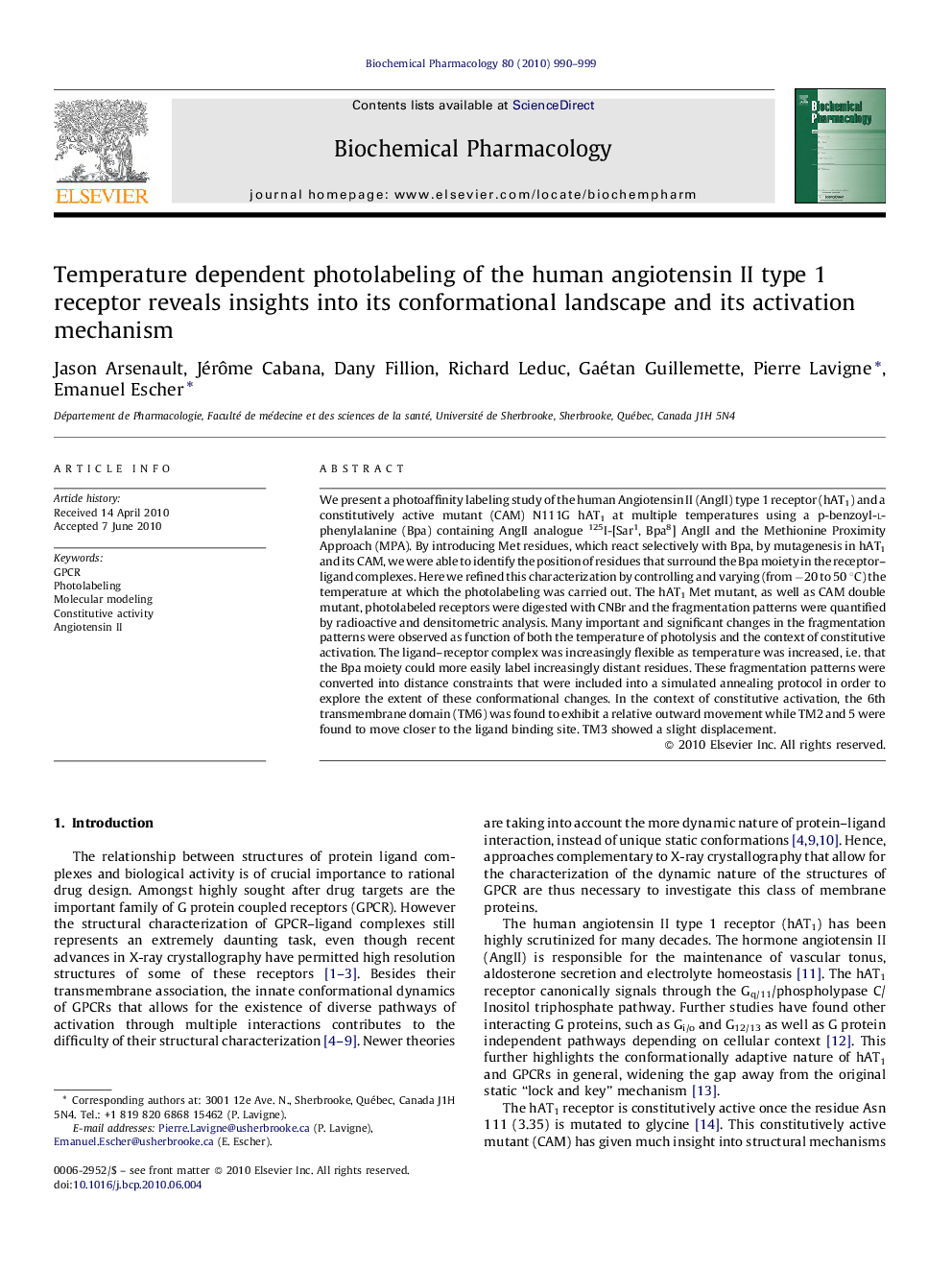| کد مقاله | کد نشریه | سال انتشار | مقاله انگلیسی | نسخه تمام متن |
|---|---|---|---|---|
| 2513344 | 1118408 | 2010 | 10 صفحه PDF | دانلود رایگان |

We present a photoaffinity labeling study of the human Angiotensin II (AngII) type 1 receptor (hAT1) and a constitutively active mutant (CAM) N111G hAT1 at multiple temperatures using a p-benzoyl-l-phenylalanine (Bpa) containing AngII analogue 125I-[Sar1, Bpa8] AngII and the Methionine Proximity Approach (MPA). By introducing Met residues, which react selectively with Bpa, by mutagenesis in hAT1 and its CAM, we were able to identify the position of residues that surround the Bpa moiety in the receptor–ligand complexes. Here we refined this characterization by controlling and varying (from −20 to 50 °C) the temperature at which the photolabeling was carried out. The hAT1 Met mutant, as well as CAM double mutant, photolabeled receptors were digested with CNBr and the fragmentation patterns were quantified by radioactive and densitometric analysis. Many important and significant changes in the fragmentation patterns were observed as function of both the temperature of photolysis and the context of constitutive activation. The ligand–receptor complex was increasingly flexible as temperature was increased, i.e. that the Bpa moiety could more easily label increasingly distant residues. These fragmentation patterns were converted into distance constraints that were included into a simulated annealing protocol in order to explore the extent of these conformational changes. In the context of constitutive activation, the 6th transmembrane domain (TM6) was found to exhibit a relative outward movement while TM2 and 5 were found to move closer to the ligand binding site. TM3 showed a slight displacement.
Molecular modeling of WT and CAM hAT1 using calculated distance constraints.Figure optionsDownload as PowerPoint slide
Journal: Biochemical Pharmacology - Volume 80, Issue 7, 1 October 2010, Pages 990–999